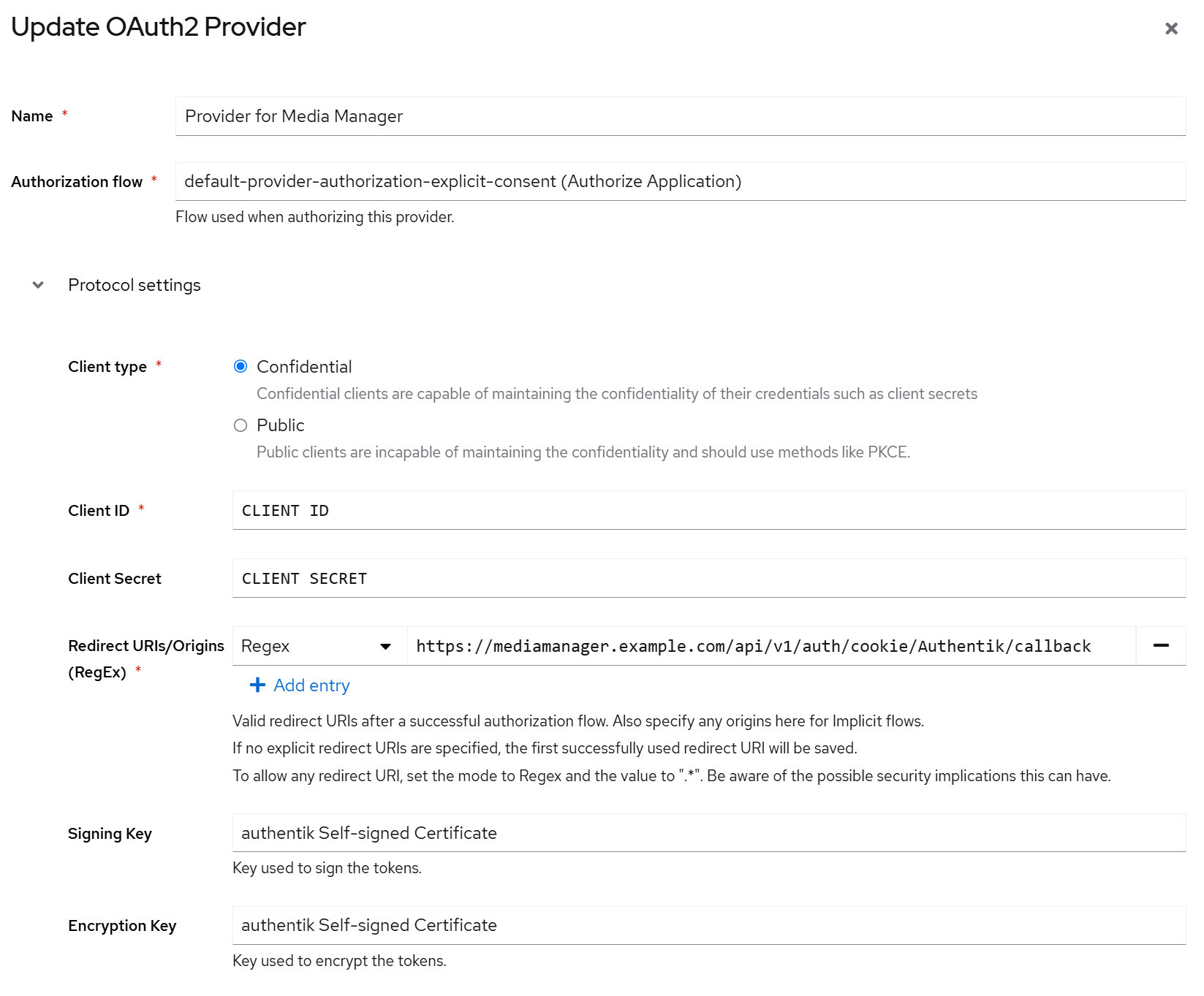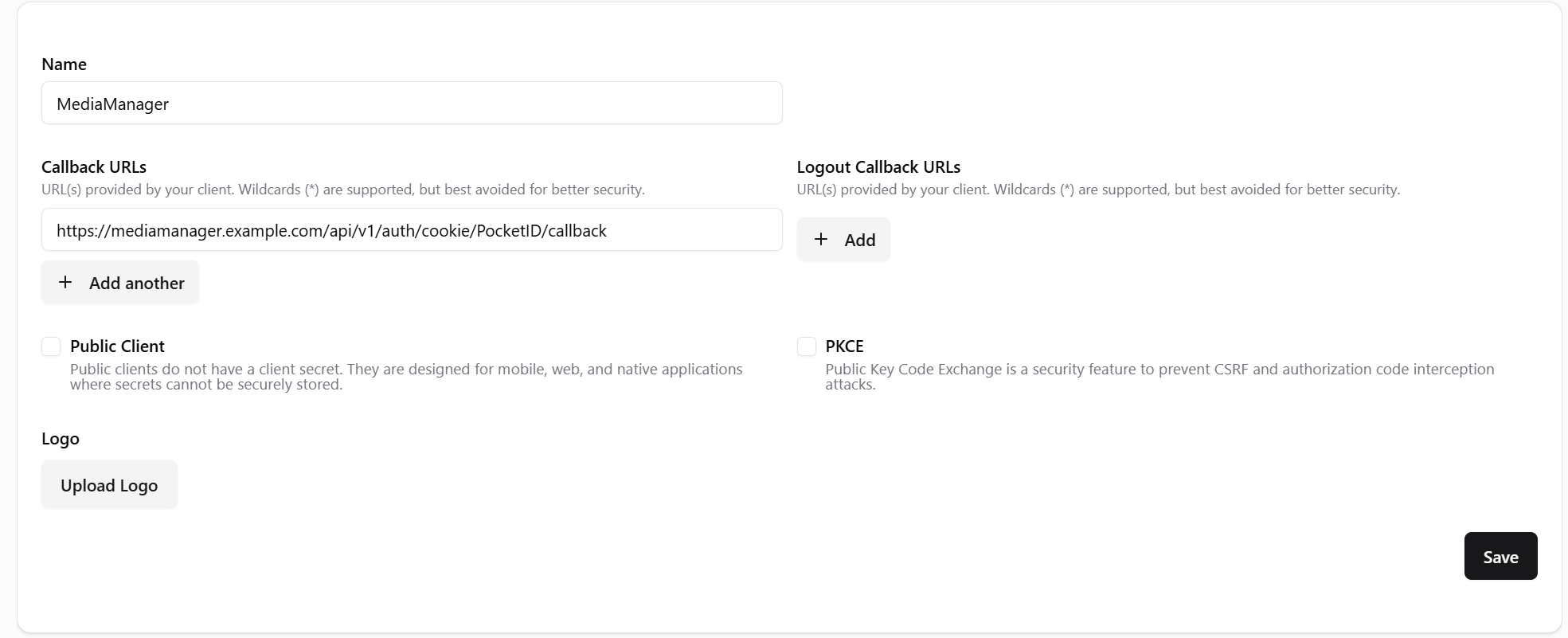Authentication
MediaManager supports multiple authentication methods. Email/password authentication is the default, but you can also enable OpenID Connect (OAuth 2.0) for integration with external identity providers.
All authentication settings are configured in the [auth] section of your config.toml file.
General Authentication Settings ([auth])
token_secret
Strong secret key for signing JWTs (create with openssl rand -hex 32). This is a required field.
session_lifetime
Lifetime of user sessions in seconds. Default is 86400 (1 day).
admin_emails
A list of email addresses for administrator accounts. This is a required field.
email_password_resets
Toggle for enabling password resets via email. If users request a password reset because they forgot their password, they will be sent an email with a link to reset it. Default is false.
OpenID Connect Settings ([auth.openid_connect])
OpenID Connect allows you to integrate with external identity providers like Google, Microsoft Azure AD, Keycloak, or any other OIDC-compliant provider.
enabled
Set to true to enable OpenID Connect authentication. Default is false.
client_id
Client ID provided by your OpenID Connect provider.
client_secret
Client secret provided by your OpenID Connect provider.
configuration_endpoint
OpenID Connect configuration endpoint URL. Note the lack of a trailing slash - this is important. It usually ends with .well-known/openid-configuration.
name
Display name for the OpenID Connect provider that will be shown on the login page.
Configuration for your OpenID Connect Provider
Redirect URI
The OpenID server will likely require a redirect URI. The exact path depends on the name of the OIDC provider. Note that the name is case-sensitive.
E.g.: I set MyAuthProvider as the name in the [auth.openid_connect] config section, thus the redirect URI would be:
Authentik Example
Here is an example configuration for the OpenID Connect provider for Authentik.

PocketID Example
Here is an example configuration for the OpenID Connect provider for PocketID.

Example Configuration
Here's a complete example of the authentication section in your config.toml: